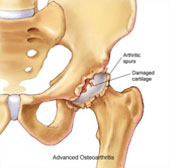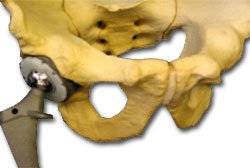What is total hip replacement?
It is also known as total hip arthroplasty (THA). Hip replacement surgery involves replacing the worn out (diseased and painful) parts of the hip joint with an artificial hip joint implant designed to allow movement and stability close to that of a normal knee.
Who needs a hip replacement surgery?
The common indications for hip replacement are severe cases osteoarthritis (OA), rheumatoid arthritis (RA), advanced cases of avascular necrosis and some cases of fractured ips (fracture neck of femur). In India one of the commonest indications for hip replacement surgery is osteoarthritis secondary to avascular necrosis (AVN) of the hip and fracture neck of femur.
What are the benefits of hip replacement surgery?
The primary benefit that a hip replacement offers is relief of pain. Additionally it allows correction of deformity and leg length discrepancy (limb shortening). This leads to improved mobility and function, and will allow patients to return to their activities of daily living (ADL). After hip replacement most patients are able to walk independently though some patients especially those who are old may require a walking aid. With a conventional hip replacement patients are able to sit on a chair but are advised to avoid sitting on a low chair, squatting and sitting cross-legged on the floor (Indian style sitting). Some of the newer hip replacement implants with a large femoral head (like in large head metal-on-metal hip replacement or bipolar hemiarthroplasty) allow patients greater degree of hip mobility enabling them to sit on the floor or squat.
What are the “do’s and don’ts” after hip replacement surgery?
Majority of the patients with hip replacement are able to perform most of their activities of daily living. Most patients are able to walk without any walking aid, though some older patients may need to use a walking stick for support. Patients can climb stairs and sit and get up from a chair or couch on their own. Patients who have a conventional hip replacement should avoid low chairs, squatting and cross-legged sitting. Those with a large head hip replacement (36 mm or above head size) are able to squat and even sit cross-legged (Indian style sitting). These activities need specific rehabilitation (exercise program) after surgery. It is however recommended that patients avoid such activities on a routine basis as it may put an undue strain on the hip which can cause a dislocation or increased wear, and therefore reduce the longevity of the artificial joint. Use of western-style toilet is also recommended. Patients may be able to play sports like golf and tennis and drive a car once they have fully recovered from the surgery. Complete recovery may take about 2-3 months.

